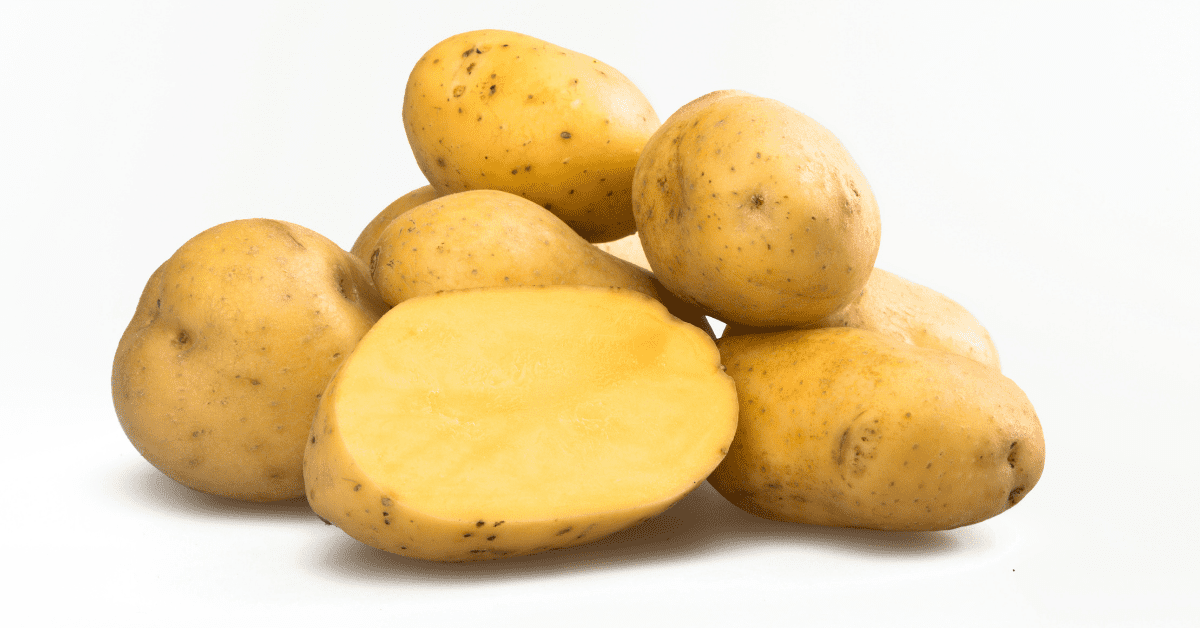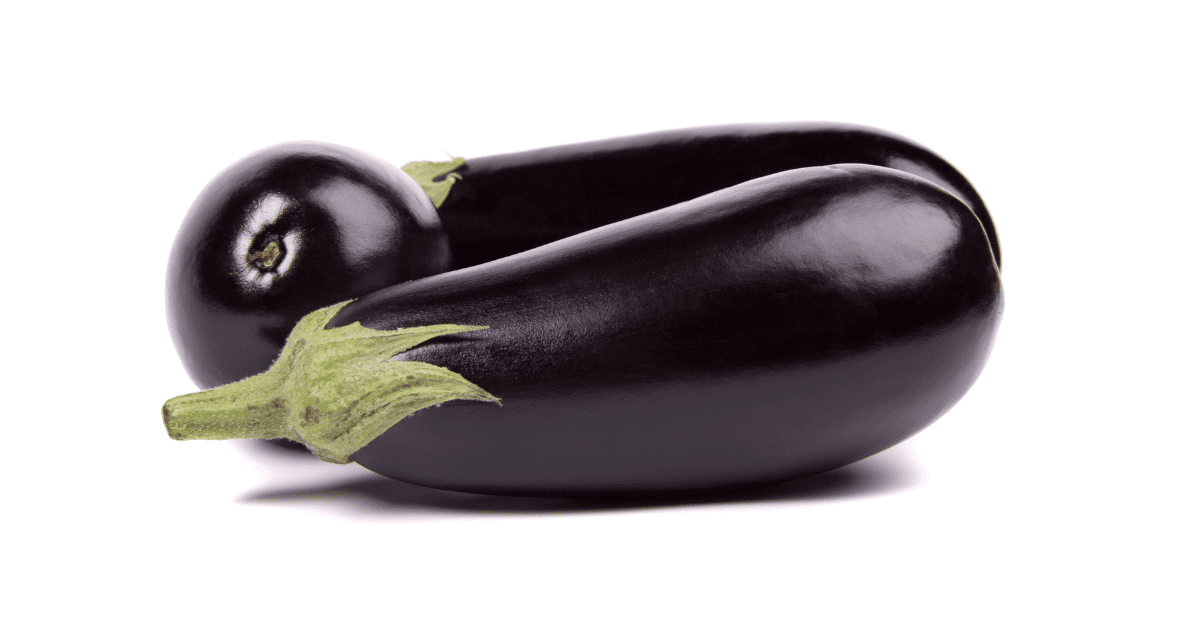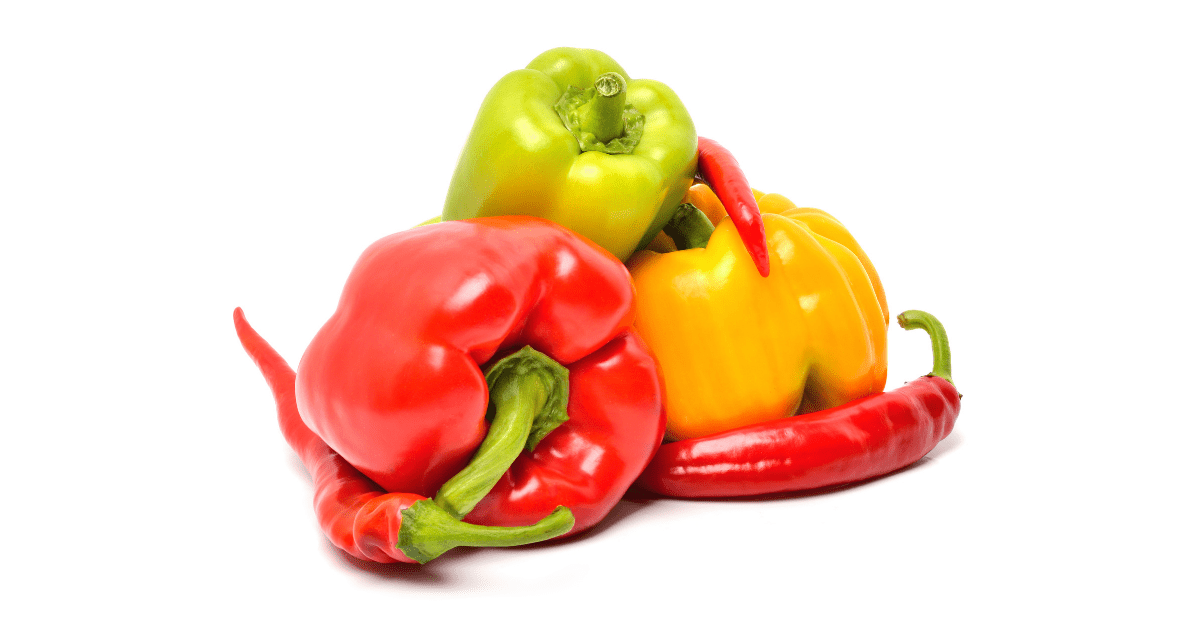Whether you watch the NFL or not, chances are you have heard the name, Tom Brady. He is one of the most talented quarterbacks in history.
But what you may not know is that Tom Brady follows a pretty strict diet. One that does not include a single Nightshade vegetable. He calls it the “TB12 Method” – there is a book you can buy.
The Autoimmune Protocol Diet (AIP) takes out all foods in the Nightshade category as well. The theory behind this is that they believe such foods cause inflammation. Something none of us need any more of.
Yet, research papers do not support this idea.
Plus, studies suggest that the same compounds they believe are bad for us may have the opposite effect. Lowering inflammation. [1]
So, let’s dig deeper into this topic.
Continue reading if you wish to learn whether you should cut Nightshades out of your diets or not.
Why are Nightshades not allowed on the Autoimmune Protocol Diet?
The AIP diet is an extension of the Paleo diet, avoiding gluten and sugar. But it also eliminates a list of foods including nightshade vegetables. [2]
The basis is to avoid foods, additives, or medications that can trigger symptoms. Such as intestinal inflammation, low gut diversity (dysbiosis), and/or symptomatic food intolerance. [2]
How are Nightshade vegetables bad for us?
Nightshade vegetables contain a group of plant chemicals known as “alkaloids.”
Alkaloids are the true definition of the Schulz Law or The Hormesis effect. In one breathe, they can be one of the most toxic substances known to mankind. You only have to look at the deadly nightshade plant itself to see that.
These bitter-tasting “anti-nutrients” disrupt our nervous system.
Ingesting a large amount of “tropane alkaloids” will cause rapid heartbeat, paralysis, and even death. Likewise, a high dose of “tryptamine alkaloids” will take you off your feet and kill you. [3]
So, no wonder humans have been using alkaloids as a poison since ancient times. But we also use those same things as stimulants, narcotics, insecticides, aphrodisiacs, and medicines.
Caffeine, nicotine, cocaine, and morphine are some examples of such alkaloids. [4]
Even recently, a poisonous alkaloid called “aconite” may hinder disease progression in systemic lupus. [5] Quite remarkable when you consider that it comes from a plant with the name “devil’s helmet.”
What are Nightshade Vegetables?
Nightshades are a large family of trees, shrubs, and herbs.
In total there are over 2500 family members, split between 90 ‘households.’ [6]
Of these, a mere 180 species contain edible fruits or vegetables. That’s around 7% of the nightshade family that we can call food. [7]
The rest are unfit for human consumption. The “deadly nightshade plant” itself is one example. Their berries are lethal to humans and some animals.
The most common types of edible nightshades:
- Aubergines: Also known as Eggplants.
- Peppers: Including sweet, bell, chili, and others.
- Potatoes: All varieties except sweet potatoes and yams.
- Tomatoes: All varieties and tomato products
Why am I not convinced that Nightshade vegetables are dangerous for all?
Not to say that nightshade vegetables are safe for everyone. But there are some important pieces missing in this puzzle that need mentioning.
#1. What doesn’t kill us, makes us stronger
“Out of life’s school of war—what doesn’t kill me, makes me stronger.”
– Friedrich Nietzsche (1888)
It’s true, the topic of Nightshade vegetables is a complicated issue. But so is nutrition.
I felt like banging my head up a wall when studying nutrition many times. The reason is, nature and plants, in particular, are such complex beings. For this reason, it’s unfair to pinpoint one bad plant chemical and taint the whole crop with it.
Yes, nightshade vegetables contain alkaloids and these can be toxic to humans. But, it’s important to remember that these vegetables also provide: [8]
- Energy
- Protein
- Fibre
- Vitamins
- Health-promoting metabolites, including antioxidant and nutraceutical compounds
It’s also key to understand the “Arndt-Schulz Rule” or the “Hormesis effect.”
“For every substance, small doses stimulate, moderate doses inhibit, large doses kill.”
– Arndt-Schulz
The “hormesis effect” is just that. A small dose of stress stimulates a response that improves biological fitness. Whereas too much stress will create damage and inhibit function.
Picture it as the body’s cells’ way of having a sparring session. As a boxer does in preparation for an upcoming fight.
One prime example is the poisonous alkaloid called “aconite”, which can be fatal to humans. [9]
For instance, in 2008 a woman killed her husband by lacing his curry with aconite. [10] Yet, in the next breath, it can treat pain and inflammation. [11] It may even be an effective treatment for those of us with systemic lupus. [12]
*WARNING: DO NOT TRY SUPPLEMENTING WITH ACONITE*
The same applies to other vegetables as well. For instance, cruciferous vegetables, like broccoli and cauliflower contain an anti-nutrient called “sulforaphane.” Sulforaphane is the opposite of an antioxidant. So, in theory, we should avoid them. [13]
Yet studies show that eating vegetables with sulforaphane actually reduces oxidative stress. [14]
#2. Don’t forget to read the small prints
When digesting information, it’s easy to miss the small print. As mentioned, the nightshade family contains alkaloids, which can be toxic. This is what makes them dangerous. It’s also why we only call 7% of them food.
But, it’s important to remember that alkaloids are a group of active compounds. One that contains at least 12,000 members. [15] The negative effects given as an example earlier were from only 3. Of which, all are of the same type, “tropane alkaloids.”
“Glycoalkaloids” are the main alkaloids in negative vegetables. Their role in nature is to defend plants against insects and pests. [16]
Although toxic to humans at certain levels. They may offer health benefits, like fighting cancer [17][18] and inflammation. [19]
This is the same story with all fruits and vegetables. Plants are living beings that are in a never-ending arms race with pathogens. So, they contain “phytochemicals” to defend against pathogens or herbivores – like us. [20]
So, you should see nightshade vegetables as individuals like other fruit and vegetables.
Who should not eat Nightshade vegetables?
Ayurvedic physicians in India had been advising against nightshade vegetables for centuries. The basis is that they can generate excess heat and acidity in the body. Leading to gout, nowadays called rheumatoid arthritis, high-level inflammation, and autoimmune diseases. [22]
They could be right when it comes to gout. A 2015 research reveals tomatoes can be a gout trigger. [23]
But few studies cover rheumatoid arthritis and nightshade vegetables. Still, a 1982 study claims that 70% of 5000 patients found relief in their arthritic symptoms by cutting out nightshade foods. [24]
Then there are autoimmune conditions like lupus. A 2020 study shows nightshade vegetables to be the third most common trigger of symptoms. This was behind dairy and gluten. [25]
Therefore, should everyone with an illness or autoimmune disorder avoid nightshade vegetables? For 4-6 weeks, why not. Then add them in and look for any signs or symptoms.
An elimination diet is the best approach for anyone to take to find their best diet.
But this is easier to say than do.
You can ingest alkaloids through vegetables, tea, and beverages. Some even creep in during food processing as a food contaminant. Examples include the likes of cow’s and goat’s milk, honey, salads, grains, and even eggs.
When you consider that there are over 12,000 alkaloids in plants, it’s easy to see how cross-contamination can happen. [21]
How to eat nightshade vegetables safely?
With all that said, it is possible that people may not be preparing nightshade vegetables in the correct way.
The biggest problem with Nightshade vegetables and their alkaloids is the fact they are not destroyed via cooking. But there are other ways to reduce them, with each vegetable being different.
To understand, we need to look at the foods of concern:

Potatoes
The Bad:
The alkaloids of concern in potatoes are “solanine” and “chaconine”. They are toxic to both fungi and humans. [22] They can cause diarrhoea, vomiting, and severe abdominal pain.
These live on the outside of the flesh – roughly 1.5 mm under the skin.
Peeling can remove 50 to 95% of a potato’s alkaloid content. [23] So, peeled potatoes will have fewer alkaloids than potato peel crisps or wedges.
Soaking may offer the added benefit of lowering “acrylamide”. This happens when starch-rich foods reach high temperatures. E.g., through frying, baking, grilling, or roasting.
Acrylamide is in many foods and may be harmful to health. [24] Then again, cooking red- and purple-fleshed potatoes increases their antioxidant content. [25]
The Good:
There is a lot more in potatoes than starch.
They house many health-promoting goodnesses [26] – over 90% of which is “chlorogenic acid.” [27] This is good news as chlorogenic acid hinders the DNA-switching protein called “NF-kB”. [28] Why? Because this protein plays a role in autoimmune diseases, like: [29]
- Rheumatoid arthritis
- Systemic lupus erythematosus
- Type-I diabetes,
- Multiple sclerosis,
- Inflammatory bowel disease (IBS)
The Reality:
Our biggest danger comes from eating “greened” potatoes.
Greening and sprouting happen when potatoes have seen too much light, or are not stored right. This increases the alkaloid levels. [30]
One solution may be to cut away the affected area. [31] Even peeling and budding, soaking in water, vinegar, or citric acid for 5-15 min can cut 80%. [32]
But a better option is to be picky with your potatoes and store them the correct way: [33]
Buying:
- Avoid buying potatoes that show signs of sprouting, greening, physical damage, or rotting.
- Buy foods from reputable sources.
- Do not eat vegetables and fruits raw or undercooked if they are usually consumed cooked.
Storing:
- Remove potatoes from plastic bags and place them in a cool, dry, and dark place at home.
- Store only small amounts of potatoes at home.
- Discard potatoes that show signs of sprouting, greening, physical damage, or rotting.
On the other hand, it is safe to eat an equal of 1 mg per kg of bodyweight of alkaloids from potatoes. With toxic doses starting from around 2 mg per kilogram of bodyweight. Lethal doses occur from 3 mg per kg. [34]
In English, this means that a person weighing 80 kg could eat 80 mg. 160 mg will cause bad effects, with 240 mg killing you.
Now consider that potatoes sold in Europe and the USA have 20-to-150mg of alkaloids per kilogram of unpeeled potatoes. [35] Take away 50-95% of this from peeling. Now think how many potatoes are in a kilo bag… imagine eating all those potatoes in one day, let alone one sitting. Generally speaking, that’s what you would have to eat to feel the ill effects of potatoes. That’s a lot!

Tomatoes
Fun fact: Many see the tomato as a vegetable, whereas it is in fact a fruit. Likewise, you think of the colour ‘red’ when you hear tomato. But they are also sold ‘green’ – Tomatillo being one example.
The Good:
The difference is the green variety contains “chlorophyll” but no “lycopene.”
Red tomatoes are full of lycopene, which is a cancer-fighting, heart-helping antioxidant. [36] Even better, lycopene can lower the risk of death in those of us with Systemic Lupus. [37]
Like chlorogenic acid, lycopene restrains that pesky protein “NF-kB”. [38]
The Bad:
Green tomatoes contain around 100-times more of their main alkaloid “tomatine”. As the tomato ripens and changes colour from green to red, this can drop to as low as 0.3 mg per kg of tomatoes. [39]
What’s more, Tomatine is 20 times less toxic than the alkaloids in potatoes. [39]
In fact, Peruvians eat tomatoes with very high tomatine levels on a regular basis. And they are still alive and kicking. Based on this, it’s fair to say that alkaloids in tomatoes are safer than those in potatoes. [40]
Feel free to stay away from green tomatoes if you want to be safe.

Aubergine (AKA Eggplant)
Aubergines come in all shapes, sizes, and colour. The most common is the elongated ovoid fruit with a dark purple/black peel. You may recognise it more as an emoji. But bet you didn’t know that aubergines are in fact a berry. There’s another fun fact for you.
The Bad:
Aubergines are rather bitter in taste. Their pulp is full of seeds, which is home to their main alkaloids “solamargine” and “solasonine.” [41] So unlike potatoes, you can’t peel away the ‘badness’.
But as with tomatoes, there have been no reports of ill effects. [42] Even though high doses can cause toxic effects like liver damage and heart damage.
The Good:
Purple aubergines are much more than a rude emoji, or a weird berry that can be toxic.
For one, their skin is full of health-promoting “anthocyanins.” [43] They have been shown to encourage the immune system to destroy colon cancer cells. [44] But even better for us, they can cool inflammation due to their antioxidant levels. [45]
What’s more, anthocyanin-rich plant extracts may reduce inflammation for gluten-sensitive individuals. [46] This is important for those of us with an autoimmune condition. Why? because gluten sensitivity plays a role in autoimmunity. [47]
The best aubergines to pick? Small, purple fruit as they have the highest amount of goodness. Think phenolic, anthocyanin, and antioxidants. [48]
How to store? After 2-3 days, it’s best to refrigerate aubergines at 4°C. This should maintain its antioxidant levels. [49]
Cooking leads to more goodness compared to raw aubergines. [50] Grilling above 95°C increases their antioxidant content. Whereas grilling below 65 °C or frying has the opposite effect. [51][52]

Peppers… Chilli and Sweet
‘Capsicum’ fruits have many name tags: Chilli-, Bell-, Red, Green or simply, ‘the red pepper’.
The Bad:
‘Capsicum’, is the only crop that produces the pungent alkaloid, “Capsaicinoids.”
They are the reason why your mouth burns when you chew a chili pepper. They work as a neurotoxin for our sensory nerves. [53] The hotter the pepper, the richer it is in “capsaicinoids.”
Scoville Heat Units (SHU) is their official form of measure. So, you can check the “Scoville Scale” for yourself to see a peppers pungency.
The wall of the pepper fruit also contains an alkaloid found in potatoes, “solanine.” Still, it’s nowhere near the levels in potatoes. [54] Which we now know is not a major worry unless you eat a green potato or a bag of uncooked, unpeeled ones.
The Good:
Ripe pepper fruits come in a range of colours, from white to deep red. As with tomatoes, green is ‘unripe’ and yellow is termed ‘mature’, with red being ‘over mature’. Of these, red bell peppers have the highest amount of “Vitamin C” and “Carotenoids.”
Surprisingly, yellow bell peppers have the highest antioxidant content. This makes red and yellow bell peppers ideal in a salad, or such, due to their bioactive compound. [55]
Funny enough, the main benefits from peppers may actually come from their bad bits. Capsaicinoids, in particular, the main one – “Capsaicin”, have seen to:
- Lower cholesterol levels [56][57]
- Be effective in weight reduction [58]
- Reduce the risk of dying from cardiovascular disease [59]
- Anti-tumour ability [60]
- Have antioxidant attributes [61]
- Fight inflammation [62] – used topically to treat rheumatoid arthritis and post-herpetic neuralgia [63][64]
- Promote salivary flow in patients with “Xerostomia,” which occurs in autoimmune diseases like Sjögren’s Syndrome [65]
Quite a catalogue, don’t you agree?
Final Thoughts
Nightshades are a large family of trees, shrubs, and herbs.
We call around 7% of this plant family food. The remaining 93% is unfit for human consumption. So, you can see why some question whether we should eat any of them.
Nightshade vegetables contain bitter-tasting anti-nutrients called alkaloids. They target our nervous system.
But studies show that some alkaloids can benefit us. Supporting the Arndt-Schulz Law… “small doses stimulate, moderate doses inhibit, large doses kill.”
What’s more all plant foods contain defensive compounds like phytochemicals. So, is it unfair to single out nightshade vegetables?
Could the issue be more with how we store and prepare such foods? Or is it true that nightshades are no good to you? You will only know by cutting them out for 4-6 weeks before adding them in and checking for symptoms.